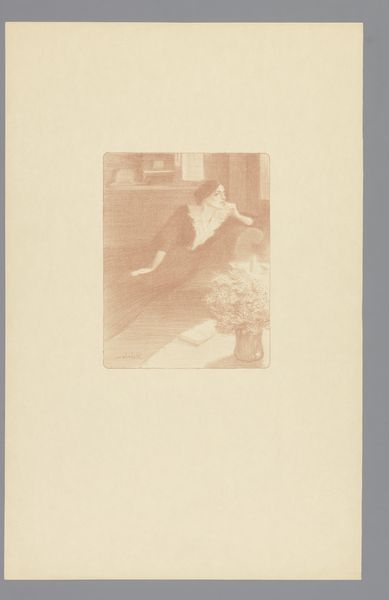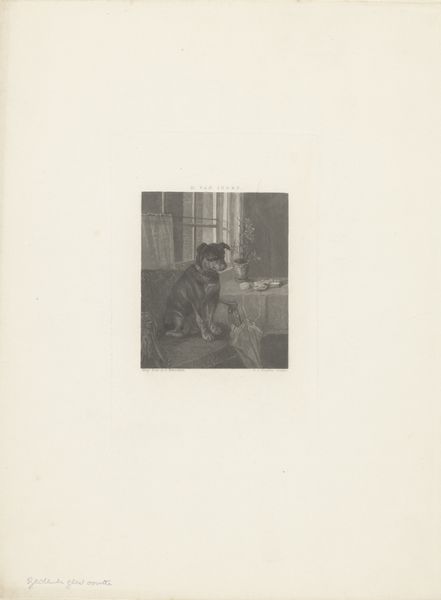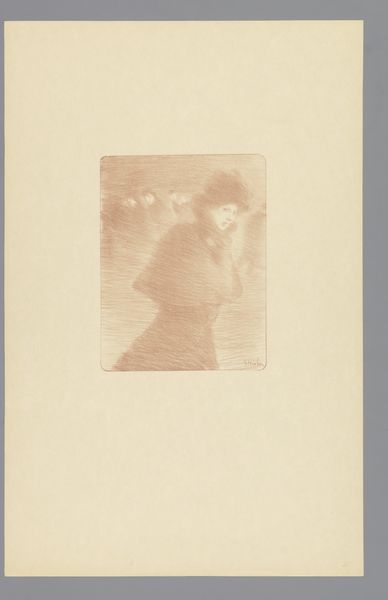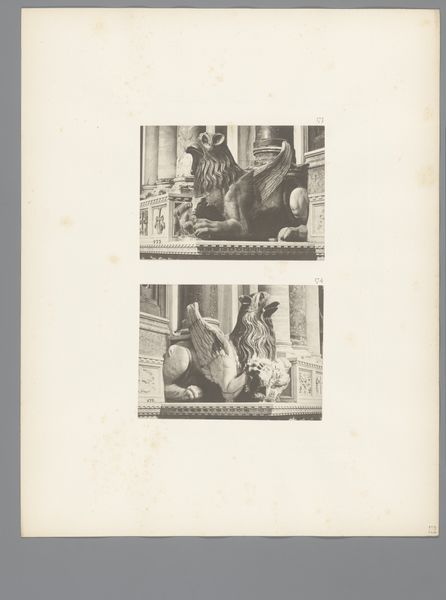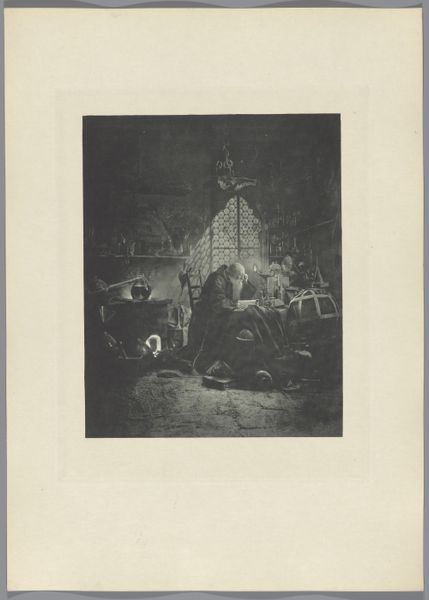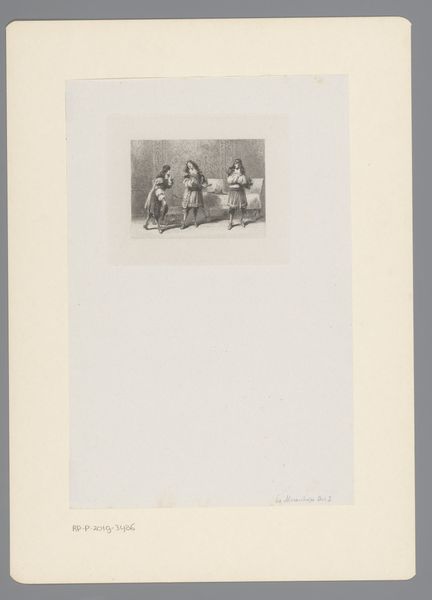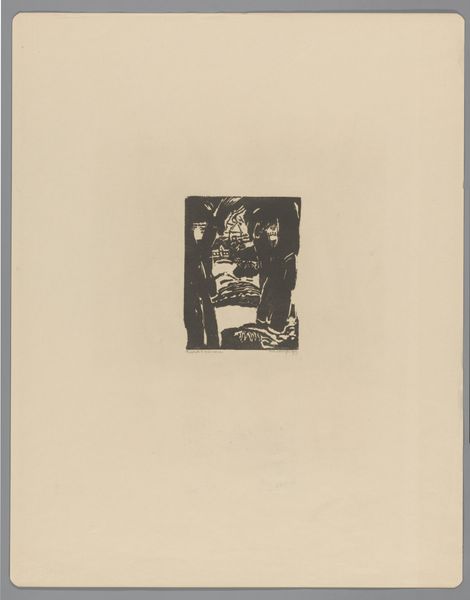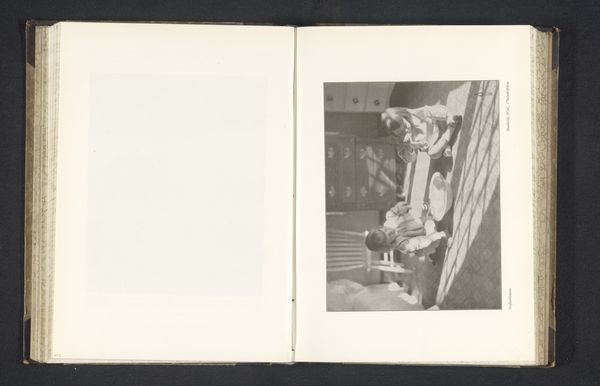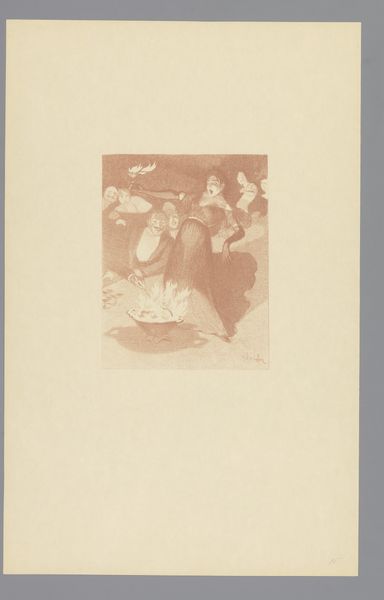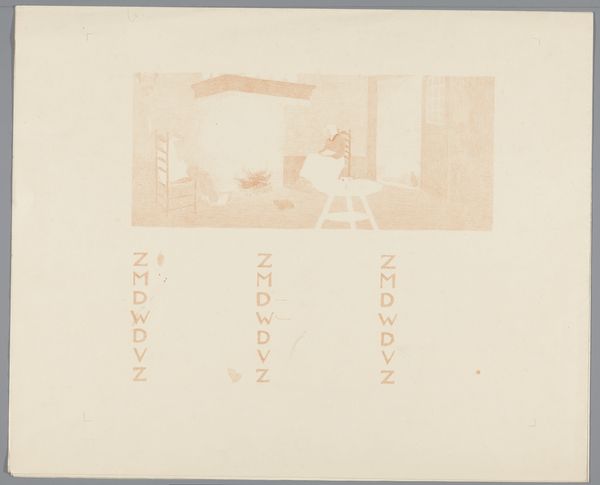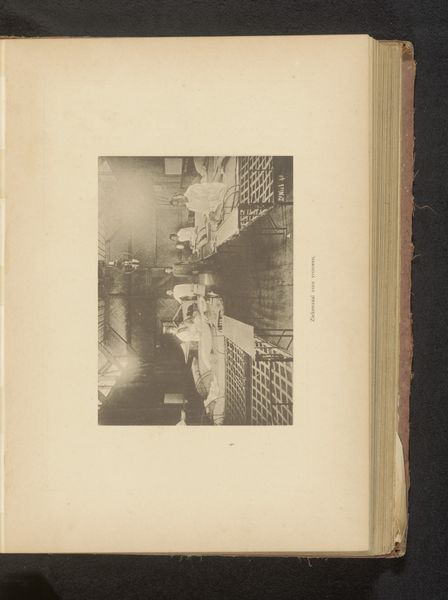
drawing, lithograph, print, paper, ink
#
portrait
#
drawing
#
lithograph
# print
#
figuration
#
paper
#
ink
#
intimism
#
symbolism
#
genre-painting
Dimensions: height 501 mm, width 321 mm
Copyright: Rijks Museum: Open Domain
Curator: Looking at this lithograph by Théophile Alexandre Steinlen, I am struck by how cleverly he uses hatching to model forms and create atmosphere. Editor: Yes, it's called “Liggende vrouw op sofa vergezeld door katten”—Reclining Woman on a Sofa with Cats, created around 1897. It's evocative, isn't it? A moment of quiet domesticity, perhaps even weariness. Curator: Absolutely. The formal elements reinforce this. Notice how the lines describing the woman are softer, more blended, compared to the crisper, darker rendering of the foreground cat. The contrast focuses our attention. And that curious tilted perspective... Editor: It definitely challenges conventional composition, pushing the reclining woman towards the background, almost as if her space, her rest, is being encroached upon. One might even interpret this in relation to evolving social roles. The leisured woman—a figure afforded privilege, but perhaps also subtly confined. Curator: A stimulating point. But look closer at the semiotic dance between line, tone, and texture. The artist doesn't just represent; he *constructs* a mood through strategic marks on paper. Editor: Agreed, and these choices can absolutely reinforce societal narratives. Were women like this subject expected to simply be decorative in fin-de-siècle Paris? Cats—often symbolically linked to female independence—becoming emblems of a more complex story here. Are they truly her companions, or merely mirroring her own confinement? Curator: The print medium itself is noteworthy. Its inherent reproducibility made Steinlen’s intimate scene accessible to a broader audience. Consider the political charge of that access... Editor: Absolutely. This isn't just an aesthetic exercise, is it? The seemingly innocent scene invites critical thought, it reminds us of how artistic vision inevitably intersects with the larger context. Even simple, repeated strokes in brown ink are saying something about gender and class, aren’t they? Curator: Well said, that balance is key to appreciation. Focusing closely on the image's inner workings *and* acknowledging its resonance within and beyond art historical context. Editor: Yes, engaging both formally and historically... finding richer ground to analyze these marks of social history in plain sight, wouldn't you say?
Comments
No comments
Be the first to comment and join the conversation on the ultimate creative platform.
